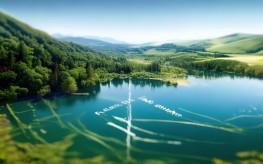Engaging in conversations about scenery is a fantastic way to practice English while appreciating the beauty of nature. Whether you're traveling, meeting new people, or simply enjoying a chat, discussing landscapes can enhance vocabulary and fluency. This guide provides practical dialogue techniques, essential phrases, and up-to-date examples to help you confidently talk about scenic views in English.

Why Discussing Scenery Improves English Skills
Conversations about nature and landscapes are universally relatable, making them ideal for language learners. They encourage:
- Descriptive language use (adjectives, comparisons)
- Cultural exchange (different regions have unique landscapes)
- Natural flow (scenery discussions often lead to related topics like travel or weather)
To illustrate current trends, let’s examine global interest in scenic destinations based on recent tourism data.
Popular Scenic Destinations in 2024 (Source: World Tourism Organization)
| Rank | Destination | Key Attraction | Annual Visitors (2023) |
|---|---|---|---|
| 1 | Switzerland | Swiss Alps & Lakes | 4 million |
| 2 | New Zealand | Fiordland National Park | 8 million |
| 3 | Canada | Banff National Park | 3 million |
| 4 | Japan | Cherry Blossom Season | 2 million |
| 5 | Norway | Northern Lights | 1 million |
This data highlights trending topics for scenery-related discussions, ensuring your conversations stay relevant.
Essential Vocabulary for Describing Scenery
Enrich your dialogue with precise terms:

Natural Features
- Mountain ranges (e.g., "The Himalayas stretch across five countries")
- Coastlines (e.g., "The rugged cliffs contrast with sandy beaches")
- Flora/Fauna (e.g., "Tropical rainforests have incredible biodiversity")
Descriptive Adjectives
| Category | Words to Use | Example Sentence |
|---|---|---|
| Size/Scale | Vast, towering, sprawling | "The Grand Canyon is a vast natural wonder." |
| Colors | Vibrant, muted, pastel | "Autumn leaves turn vibrant shades of red." |
| Atmosphere | Serene, dramatic, untouched | "The Norwegian fjords have a dramatic beauty." |
Practical Dialogue Examples
Example 1: Comparing Urban and Natural Landscapes
A: "Have you noticed how city skylines and mountain ranges create completely different feelings?"
B: "Absolutely! Skyscrapers feel impressive but man-made, whereas mountains seem timeless. Do you prefer one over the other?"
Example 2: Discussing Seasonal Changes
A: "I love how Central Park transforms with each season—what’s your favorite time to visit?"
B: "Spring, when the cherry blossoms bloom. The pink against the cityscape is magical."
Incorporating Current Trends
To make conversations engaging, reference recent developments:
- Ecotourism growth (up 23% since 2022, per Sustainable Travel International)
- Climate change impacts (e.g., "Glacier National Park has lost over 60% of its glaciers since 1850")
Improving Fluency Through Scenery Talk
- Use comparisons: "This lake reminds me of Loch Ness, but less foggy."
- Ask open-ended questions: "What’s the most unforgettable landscape you’ve seen?"
- Share personal experiences: "I once hiked a volcano at sunrise—the colors were unreal!"
Common Mistakes to Avoid
- Overusing generic terms like "nice" or "beautiful"
- Neglecting to listen and build on others' comments
- Forgetting cultural context (e.g., some landscapes hold spiritual significance)
Visualizing Data for Better Discussions
Here’s how climate shifts are altering famous landmarks (Source: NASA Earth Observatory):

Glacial Retreat in Key Locations
- Patagonia Ice Fields: 12% reduction (2000–2023)
- Greenland Ice Sheet: Losing 267 billion tons/year
This information adds depth to conversations about environmental changes affecting scenery.
Advanced Techniques: Storytelling with Scenery
Paint verbal pictures:
"Imagine standing on Santorini’s cliffs at sunset—the white buildings glow orange, and the Aegean Sea stretches endlessly. That’s why I keep returning."
Resources for Continued Learning
- Google Earth VR (explore landscapes virtually)
- National Geographic’s "Daily Nature Photo" (vocabulary inspiration)
- UNESCO World Heritage List (discussion topics)
Conversations about scenery bridge language gaps and create meaningful connections. By combining vivid descriptions, current data, and active listening, you’ll turn simple small talk into engaging exchanges that sharpen your English skills. Keep practicing with diverse landscapes—every new view offers fresh words to discover.








